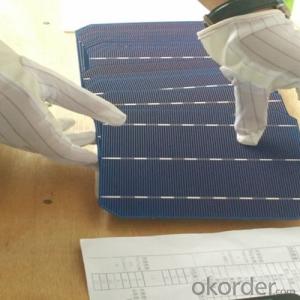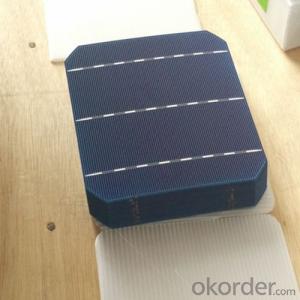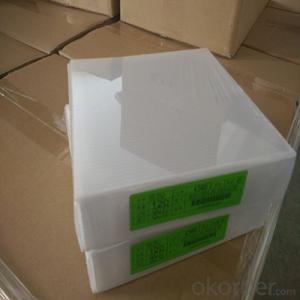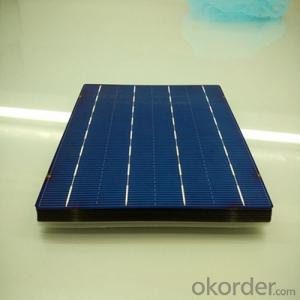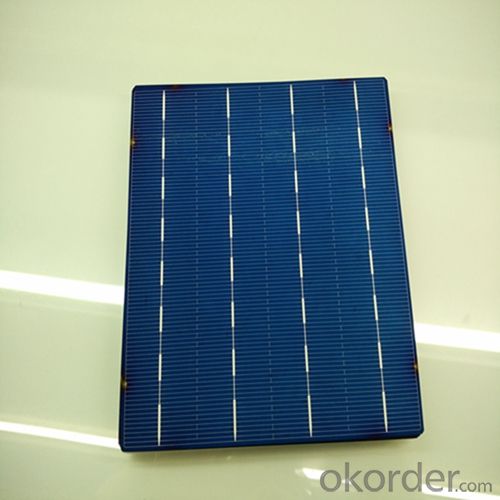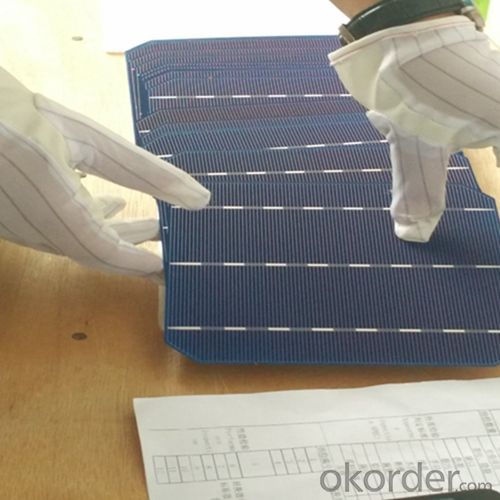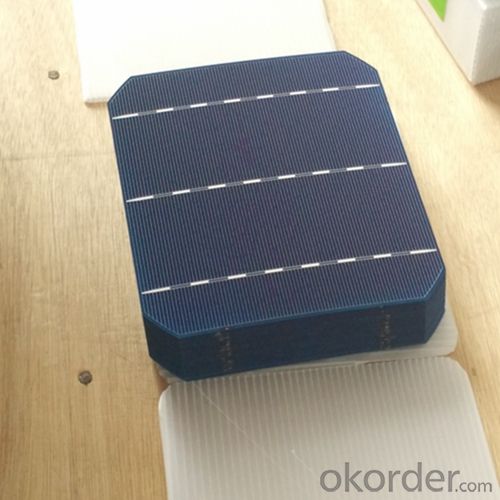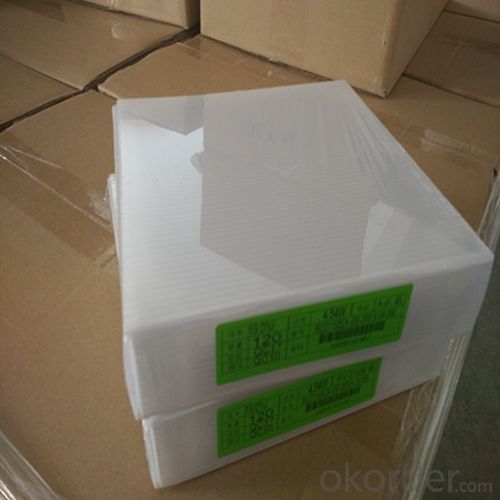Poly 156x156 Solar Cells Class A Made in China for Garden Lights
- Loading Port:
- Shanghai
- Payment Terms:
- TT OR LC
- Min Order Qty:
- 6700 watt
- Supply Capability:
- 6000000 watt/month
OKorder Service Pledge
OKorder Financial Service
You Might Also Like
The operation of a photovoltaic (PV) cell requires 3 basic attributes:
The absorption of light, generating either electron-hole pairs or excitons.
The separation of charge carriers of opposite types.
The separate extraction of those carriers to an external circuit.
In contrast, a solar thermal collector supplies heat by absorbing sunlight, for the purpose of either direct heating or indirect electrical power generation from heat. A "photoelectrolytic cell" (photoelectrochemical cell), on the other hand, refers either to a type of photovoltaic cell (like that developed by Edmond Becquerel and modern dye-sensitized solar cells), or to a device that splits water directly into hydrogen and oxygen using only solar illumination.Characteristic of Mono 156X156MM2 Solar Cells
You are gaining energy independence - add battery backup power for even greater energy security
The cost of electricity is only going to rise – insure against that rising cost
Adaptive cells change their absorption/reflection characteristics depending to respond to environmental conditions. An adaptive material responds to the intensity and angle of incident light. At the part of the cell where the light is most intense, the cell surface changes from reflective to adaptive, allowing the light to penetrate the cell. The other parts of the cell remain reflective increasing the retention of the absorbed light within the cell.[67]
In 2014 a system that combined an adaptive surface with a glass substrate that redirect the absorbed to a light absorber on the edges of the sheet. The system also included an array of fixed lenses/mirrors to concentrate light onto the adaptive surface. As the day continues, the concentrated light moves along the surface of the cell. That surface switches from reflective to adaptive when the light is most concentrated and back to reflective after the light moves along
Mechanical data and design
Format | 156mm x 156mm±0.5mm |
Thickness | 210μm±40μm |
Front(-) | 1.5mm bus bar (silver),blue anti-reflection coating (silicon nitride) |
Back (+) | 2.5mm wide soldering pads (sliver) back surface field (aluminium) |
Temperature Coefficient of Cells
Voc. Temp.coef.%/K | -0.35% |
Isc. Temp.coef .%/K | +0.024%/K |
Pm.Temp.coef. %/K | -0.47%/K |
Electrical Characteristic
Effiency(%) | Pmpp(W) | Umpp(V) | Impp(A) | Uoc(V) | Isc(A) | FF(%) |
18.35 | 4.384 | 0.526 | 8.333 | 0.63 | 8.877 | 78.39% |
18.20 | 4.349 | 0.526 | 8.263 | 0.63 | 8.789 | 78.54% |
18.05 | 4.313 | 0.525 | 8.216 | 0.63 | 8.741 | 78.32% |
17.90 | 4.277 | 0.524 | 8.161 | 0.625 | 8.713 | 78.04% |
17.75 | 4.241 | 0.523 | 8.116 | 0.625 | 8.678 | 77.70% |
17.60 | 4.206 | 0.521 | 8.073 | 0.625 | 8.657 | 77.36% |
17.45 | 4.170 | 0.519 | 8.039 | 0.625 | 8.633 | 76.92% |
17.30 | 4.134 | 0.517 | 8.004 | 0.625 | 8.622 | 76.59% |
17.15 | 4.096 | 0.516 | 7.938 | 0.625 | 8.537 | 76.80% |
17.00 | 4.062 | 0.512 | 7.933 | 0.625 | 8.531 | 76.18% |
16.75 | 4.002 | 0.511 | 7.828 | 0.625 | 8.499 | 75.34% |
16.50 | 3.940 | 0.510 | 7.731 | 0.625 | 8.484 | 74.36% |
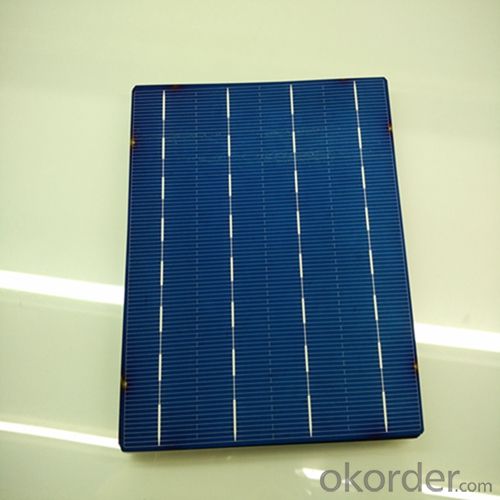
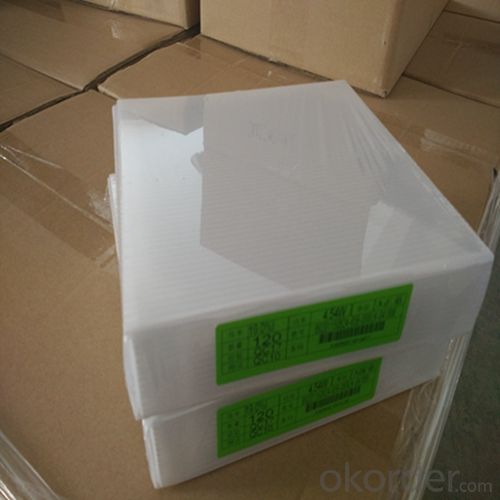
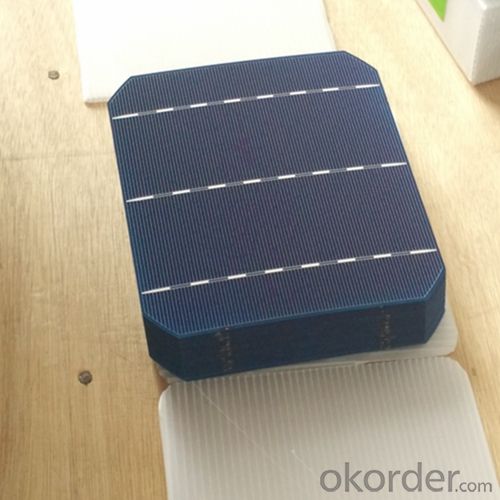
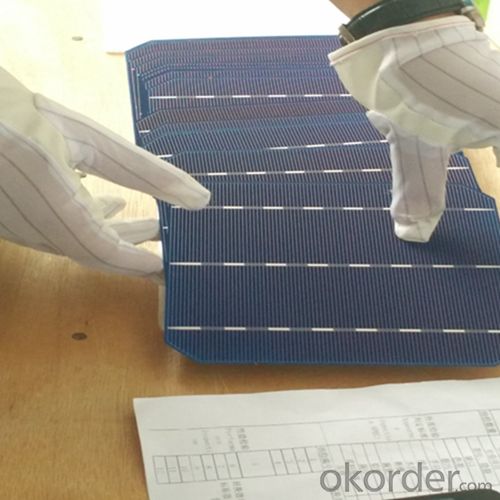
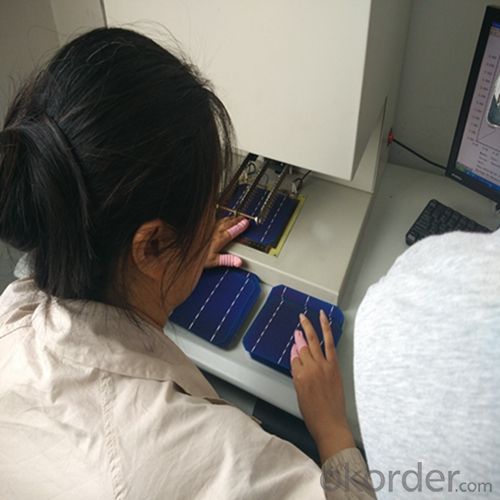 FAQ
FAQ
Q: What price for each watt?
A: It depends on the quantity, delivery date and payment terms, generally Large Quantity and Low Price
Q: What is your size for each module? Can you tell me the Parameter of your module?
A: We have different series of panels in different output, both c-Si and a-Si. Please take the specification sheet for your reference.
Q: What is your size for each module? Can you tell me the Parameter of your module?
A: We have different series of panels in different output, both c-Si and a-Si. Please take the specification sheet for your reference.
- Q: What is the difference between a solar cell and a solar panel?
- A solar cell is the basic unit that converts sunlight into electricity, while a solar panel is a collection of multiple solar cells arranged in a larger structure to generate a higher amount of electricity.
- Q: How do solar cells impact air pollution?
- Solar cells have a positive impact on air pollution as they produce clean and renewable energy, reducing the reliance on fossil fuels. By generating electricity from sunlight, solar cells help to decrease the emission of harmful pollutants and greenhouse gases that contribute to air pollution and climate change.
- Q: Is silicon-based solar cells and silicon-based thin-film solar cells the same?
- Monocrystalline silicon polysilicon battery components with tempered glass panel aluminum alloy frame when the flat, hard board. Soft with flexible material, thin battery is a soft board
- Q: Can solar cells be used in art installations?
- Yes, solar cells can definitely be used in art installations. They can be incorporated into various forms of artistic expression, such as sculptures, installations, and even interactive pieces. Solar cells not only provide a sustainable source of energy but also add an element of innovation and environmental consciousness to art. Their ability to generate electricity from sunlight opens up endless possibilities for creativity and the integration of technology in artistic displays.
- Q: What is the effect of pollution on solar cell performance?
- The effect of pollution on solar cell performance is generally negative. Pollution, such as dust, smog, and airborne particles, can accumulate on the surface of solar panels, reducing their ability to absorb sunlight and convert it into electricity. This buildup of pollutants creates a barrier between the sun's rays and the solar cells, resulting in decreased energy production. Regular cleaning and maintenance of solar panels are necessary to mitigate the impact of pollution and maintain optimal performance.
- Q: Can solar cells be used in residential homes?
- Yes, solar cells can definitely be used in residential homes. In fact, they are increasingly being adopted as a sustainable and cost-effective energy solution for households. Solar cells convert sunlight into electricity, allowing homeowners to generate their own clean and renewable energy. This not only reduces reliance on fossil fuels but also helps save money on electricity bills. With advancements in technology and decreasing costs, solar panels have become more accessible and efficient, making them a popular choice for residential homes worldwide.
- Q: Can solar cells be used to power remote locations?
- Yes, solar cells can be used to power remote locations. Solar cells, also known as photovoltaic cells, convert sunlight into electricity, making them an ideal solution for off-grid and isolated areas where traditional power sources are not available or feasible to install. Solar panels can be easily set up in remote locations to harness solar energy and generate electricity, providing a reliable and sustainable power source for various applications such as lighting, communication systems, water pumping, and even small-scale industrial processes.
- Q: Can solar cells be used for water heating applications?
- Yes, solar cells can be used for water heating applications. Photovoltaic (PV) solar cells can convert sunlight directly into electricity, which can then be used to power electric water heaters. Additionally, solar thermal collectors can be used to heat water directly by absorbing sunlight and transferring the heat to the water. Both methods offer efficient and sustainable alternatives to traditional water heating systems.
- Q: Can solar cells be used to power remote sensing devices?
- Yes, solar cells can be used to power remote sensing devices. Solar cells convert sunlight into electricity, providing a reliable and sustainable source of power for remote sensing devices in areas where traditional power sources may be unavailable or impractical. This enables continuous operation of these devices, allowing for data collection and monitoring in remote locations.
- Q: How can I understand the working principles of solar cells?
- All in all, the working principle of a solar cell can be understood in this way, a high technology that use the sun energy for electricity.
Send your message to us
Poly 156x156 Solar Cells Class A Made in China for Garden Lights
- Loading Port:
- Shanghai
- Payment Terms:
- TT OR LC
- Min Order Qty:
- 6700 watt
- Supply Capability:
- 6000000 watt/month
OKorder Service Pledge
OKorder Financial Service
Similar products
Hot products
Hot Searches
Related keywords

